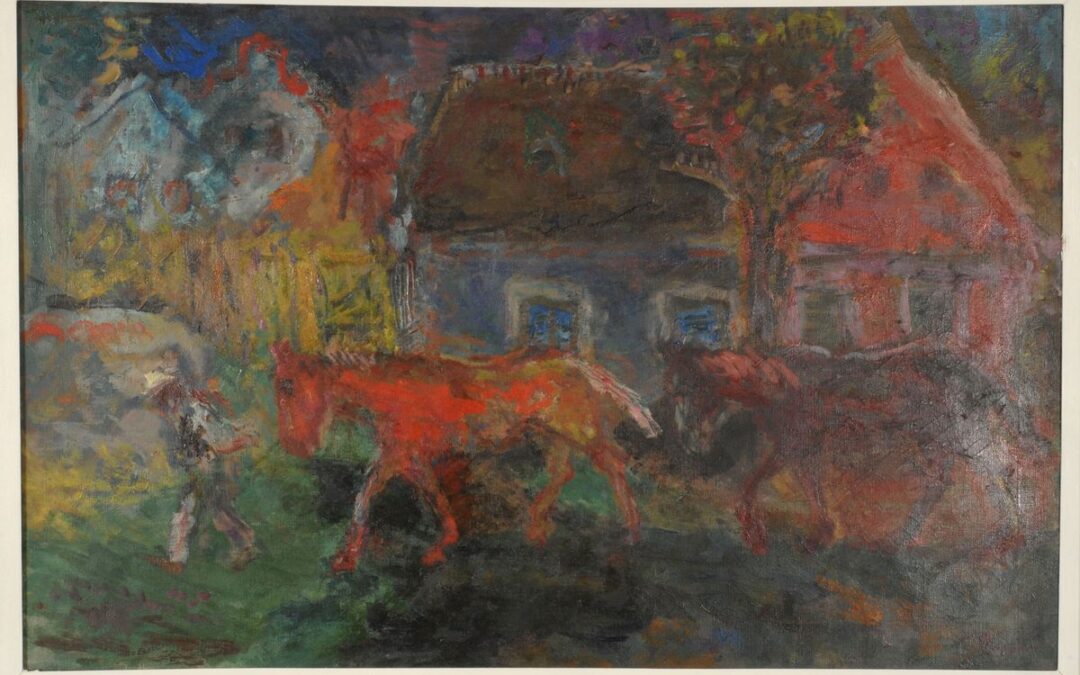On this day, August 14th, 1973, Ivan Radović, a painter whose diverse oeuvre represented a mirror of the art of the time in which he created, died.
The beginning of the 20th century was full of dramatic social, technological, and political changes. World wars and revolutions brought instability, insecurity, but also new ideas about modernity, innovation and breaking old patterns. Despite the unfavourable circumstances that deeply marked this time, the artistic life unfolds unhindered and freely, looking for new ways to express the truth by experimenting with forms, colour, and ideas. Such a disharmonious atmosphere of the zeitgeist and art will mark the creativity of Ivan Radović, relegating him to his intimate world.
The life of Ivan Radović, which began in a priest’s family in Vršac on June 22nd, 1894, was permeated by a struggle with poverty after the death of his father. This struggle, which will accompany him throughout his life, will not prevent him from consistently pursuing his calling as a painter as well as a successful tennis player, with a talent for playing the piano and violin. He discovered his giftedness as a painter while still at the Teacher’s School in Sombor, when, while hanging out with Milan Konjović, he expressed his desire to study painting at the Academy in Prague, like Konjović. By coincidence, in 1917 he enrolled at the Academy of Arts in Pest under professor Ištvan Reti, a student from Munich and a great advocate of leaving the studio and painting outdoors. In 1918, as the best student, Radović received an award, which enabled him to spend a month in a recognized art college in Nagbanja, where he would gain experience in the company of the Hungarian Fauvists, through painting landscapes, searching for light and playing with colour in the plein air. In 1919, he fulfilled his desire to go to Prague, where, in addition to spending two semesters at the Academy with professor Jozef Loukota, an excellent portraitist and painter of genre scenes, he also got acquainted with the works of the Czech Cubo-Expressionists.
After returning from the Academy in 1921, he travelled to Munich, Vienna and later to Paris. On his travels with passion Pilgrim visits museums, which he considers an extremely important aspect of the education of every painter. In those years, Radović, who adopted and perfected what he learned, searches for the expression of his intimate thoughts, deals with the question of his own identity and belonging to the society in which he is. In Sombor, he experimented with the simplification of form in the spirit of cubo-constructivism, however, after moving to Belgrade, longing for his native Bačka, he began to paint in the spirit of a naive artist, whose works he collected in school days in addition to icons on glass, tapestries and embroideries. Todor Manojlović, an art critic, after the exhibition in Belgrade’s Officers’ Home in 1927, noted “With one great love, Mr. Radović immersed himself, so to speak, in the spirit and mood of his surroundings, and he looks at it and paints through its feelings: with wonderful lyricism and humour, and the naive colour sensibility of a peasant or an excited child, who enjoys bright, fiery colours – with the colours of honey cakes and Easter eggs – in expressionistic two-dimensional decorativeness and in some, if one could say, lyrical anecdotism that miraculously combines touching and irony”.
Qualifying for the Davis Cup against the Greek national team in 1929 and two doubles matches against Sweden in 1930 established Radović’s position in society, which until then was only the subject of his paintings. Soon after the Second World War, opportunities took him to captivity in Germany, from where he returned to Belgrade, where he found his place in the artistic life of the city as a member of the “Six”. Ivan Radović covered a large number of topics, from city views, female and male nudes, interior depictions and still lifes, playing with different styles. However, the subject that this painter of “Vojvodina realism” did not abandon and in which he most sincerely expressed his longing lyrical character was the Bačka village, its everyday life and the seemingly idyllic life of the plainsmen.
Jelena Marković
art historian, volunteer
National Museum Kraljevo
